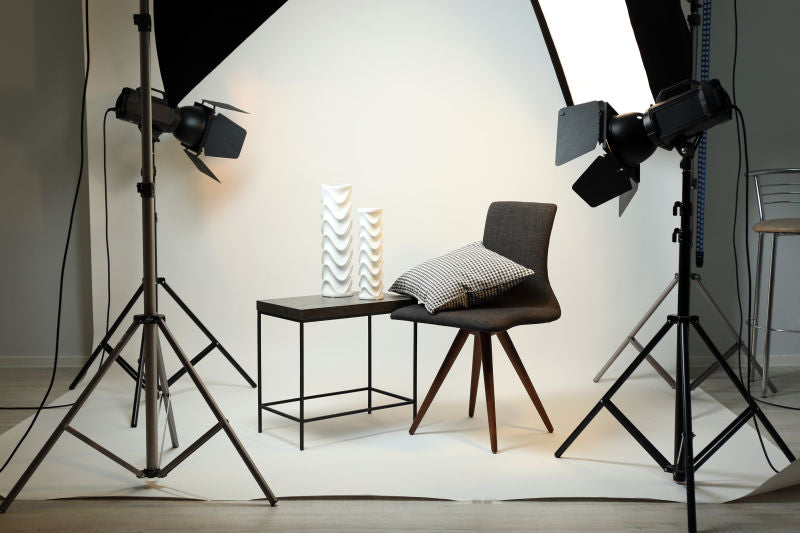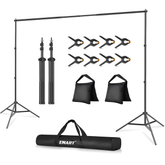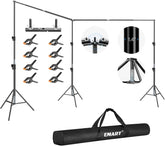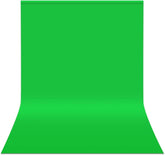How to Use a Ring Light for Gorgeous Photos (+ 5 Creative Ideas)
A ring light is a simple, relatively inexpensive way to get started with studio photography – and with the right approach, it can look really, really good.
But how can you use a ring light to create portraits like these? And furthermore, how can you go beyond standard ring light photography to capture photos that stand out from the crowd?
In this article, I’m going to take you through all the ring light basics. I’m going to explain what a ring light is and how to use it. Then, for those who are interested in more advanced ring light applications, I’m going to share five unconventional approaches (such as using a ring light as a prop).
So by the time you’re done with this article, you’ll know how to use a ring light like a pro – and you’ll even have a few tricks up your sleeve for the next time you’re after unique images.
Let’s jump right in.

What is a ring light?
A ring light is a circular, ring-shaped light designed to be placed directly in front of a subject. You then position your camera in the center of the ring and capture your photos.
Generally speaking, ring lights are used as on-axis, even lighting. Because the subject is illuminated from every direction, ring light photography tends to be a bit flat.
Ring-lit portraits don’t feature interesting shadows – for that, you’ll want to look at options such as Rembrandt lighting and loop lighting – but they have a certain flat, vibrant, in-your-face charm. Some photographers love the flat look, and other photographers hate it; it’s really all about personal preference, and it’s certainly possible to use a ring light to great effect.
By the way, continuous ring lights offer a major bonus for portrait photographers: Because the output is constant, your subject’s pupils get constricted. That way, you’ll see more of the color of their eyes in your photos – which generally looks great!
The two types of ring lights

There are two types of ring lights you should be familiar with:
Off-camera ring lights, which attach to an external light stand, offer a wide band of illumination, and include a large aperture into which a camera can fit. This is the type of ring light featured throughout the article.
And on-camera ring lights (sometimes called ring flashes), which mount to the front of your lens and provide a narrow band of light.
For portrait photography and videography, off-camera ring lights (as pictured throughout this article) are more versatile; you can position them however you like, plus they offer a wider band of light, which is helpful for larger subjects. Off-camera ring lights also generally offer continuous lighting only, which makes them highly useful for videography and studio photography, but less useful for situations where you need a powerful burst of light in a dark setting (e.g., when photographing a frog at night).

On-camera ring flashes are more commonly used by macro photographers or for scientific purposes (you’ll sometimes see crime-scene photographers shooting with a ring flash on TV!). You mount an on-camera ring flash to the front of your lens, then you can easily carry the entire setup into the field (to photograph insects and flowers or, yes, dead bodies). Because a ring light sits on the end of the lens, there’s no concern about the camera or lens barrel casting shadows on your subject, and it lets you shine light in dark, shadowy places.
Note that ring flashes often offer some sort of flash (i.e., strobe) setting, and some of them only work as flashes. If you’re after a powerful burst of light, this is ideal. But be careful before purchasing a ring flash for videography, as you won’t be able to use it unless it offers a continuous setting.
How to do ring light photography: the basics
As you’re likely now aware, using a ring light is insanely easy. It can be boiled down to a simple, four-step process:
- Mount the ring light to a light stand or on the front of your lens (depending on the type of ring light you own).
- Position the ring light in front of your subject (and if you’re using an off-camera ring light, put your camera through its center).
- Manually dial in your camera’s exposure settings (I recommend f/5.6 at 1/160s as a good starting point).
- Take a shot. If it looks good, then fire away. If it’s too bright or too dark, make the necessary adjustments, either by darkening/brightening the ring light output, or by increasing/decreasing your aperture, shutter speed, or ISO.
And that’s it!
But what if you want to take your ring light photography to the next level? What if you want to create unique, more unusual ring-lit photos?
As long as you own an off-camera ring light, one with a continuous output, you can use the 5 unconventional ring light techniques I share in the next section:

5 unconventional ideas for ring light photography
It’s time to get a bit experimental – and have lots of fun with ring lights in the studio! Starting with option number one:
1. Use your ring light as a standard studio light
Despite their circular shape, ring lights work great as normal lights; simply raise the light, angle it toward your subject, and it essentially becomes a small softbox!
If you have more than one ring light, you can use them together to create just about any two-light setup that you can imagine. And if the ring lights you own offer an adjustable output, managing your key-to-fill ratios should be pretty easy.
2. Use your ring light as a prop
LED ring lights don’t get very hot – so if you own one, test out the temperature, then feel free to let your subject pose with the ring for some unique images.
The results will vary with ring lights of different sizes, and you do have to worry about the plug and the cables, but it’s still a fun technique. Just make sure not to overuse it (the light has a tendency to illuminate your subject from below, which isn’t the most flattering angle).

3. Use your ring light as ambient fill
These days, ring lights are pretty darn powerful – so you can add them into a studio lighting setup as a gentle, natural-looking fill light.
A couple of things you’ll want to keep in mind:
While ring lights are powerful, your strobes will probably blow them out of the water if left unadjusted, so set the power (both on the strobes and on the ring lights) accordingly.
Also, if you’re going to be mixing light sources, you’ll probably want a ring light with an adjustable color temperature.
For an even more experimental approach, you can try using the ring light as your primary light source and your strobes as fill. To make this work, however, you’ll need to take the strobe power way down, so make sure the power on your strobes can drop that far before committing to the technique.
4. Use your ring light as a compositional device
I love creating compositions that actually include the ring light in the shot; check out this photo, where I framed my subject’s face with the circle of light.
And you’re not limited to putting the light behind your subject. You can place it anywhere in your frame to create cool effects – try putting a ring light above your subject for a halo effect, or placing a ring light at an angle just inside your frame for a curved band of light running through the composition.
5. Try dragging the shutter
Dragging the shutter is a fun technique that can result in beautiful photos, but it generally involves the use of both a flash and some ambient light.
However, with a ring light and a strobe, you can let the ring light act as ambient fill, fire your strobe, and decrease the shutter speed for some stunning effects.






